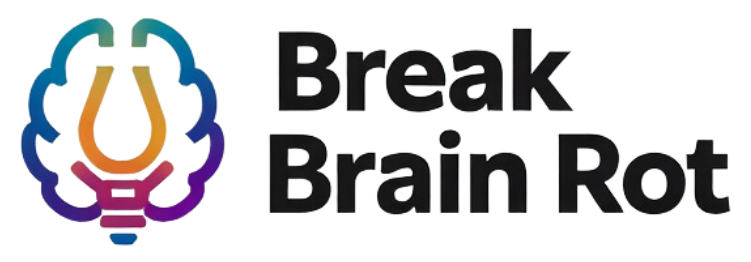In an age where our thumbs never stop scrolling, endless feeds of negativity can quietly shape how we feel, think, and even sleep. This constant intake of bad news has a name — doomscrolling addiction. Understanding the doomscrolling addiction causes is the first step toward regaining balance in your digital life. In this article, you’ll explore why doomscrolling is so addictive, its psychological and technological roots, and actionable methods to break free from its toxic grip.
Table of Contents
- What Is Doomscrolling and Why It Happens
- Psychological Doomscrolling Addiction Causes
- The Role of Technology and Algorithms
- The Emotional and Social Impact of Doomscrolling
- How to Break the Doomscrolling Addiction Cycle
- FAQs
- Conclusion
What Is Doomscrolling and Why It Happens
Defining Doomscrolling Addiction
Doomscrolling refers to the compulsive consumption of negative online content—news updates, social media posts, or disaster reports—that keeps you engaged through anxiety rather than pleasure. Over time, this repeated exposure becomes habitual and mirrors other forms of digital addiction, feeding your brain with short bursts of information that trigger curiosity and fear simultaneously.
The Science Behind Digital Overload
Every scroll delivers an unpredictable reward—a new headline, alarming statistic, or shocking image—that activates the brain’s dopamine system. This intermittent reinforcement is the same mechanism behind gambling or slot machines. As explained by Psychology Today, unpredictability keeps users glued to their screens longer, even when the experience feels unpleasant.
The Shift in Online Behavior Post-Pandemic
During the pandemic, people turned to digital spaces for updates, community, and certainty. However, this reliance created an emotional dependency on the news cycle. The mix of global fear and social isolation accelerated doomscrolling tendencies, intertwining digital consumption with psychological comfort and anxiety.

Psychological Doomscrolling Addiction Causes
Fear of Missing Out (FOMO) and Control Illusions
One of the biggest doomscrolling addiction causes is the fear of missing out. Staying informed feels like a form of control, especially in uncertain times. You convince yourself that constant checking keeps you safe and prepared—even though it fuels additional stress. You can learn more about this tendency in Understanding FOMO in the Digital Age.
Anxiety, Uncertainty, and Negativity Bias
The human brain has evolved to prioritize threatening information for survival. This “negativity bias” makes bad news feel more important than good news. According to the American Psychological Association, negative information lingers longer in memory, reinforcing anxiety and increasing our compulsion to keep scanning for updates.
The Role of Cognitive Dissonance and Information Seeking
Cognitive dissonance occurs when your beliefs conflict with reality—like wanting positivity but feeding on negative content. To resolve this discomfort, you seek more information online, ironically repeating the very behavior that caused distress. This loop sustains the doomscrolling cycle.
The Role of Technology and Algorithms
Social Media Design and Infinite Scrolling
Social platforms are engineered for engagement. Infinite scrolling, autoplay videos, and tailored “for you” feeds are designed to maximize screen time. As highlighted by the Center for Humane Technology, these features exploit attention and amplify doomscrolling addiction causes by removing natural stopping cues.
Personalized Content Feeds That Reinforce Negativity
Algorithms notice your interactions—clicks, shares, and reading time—and deliver similar emotionally charged content. The more negativity you engage with, the more your feed saturates with it, reinforcing digital echo chambers that distort perception.
Push Notifications and Trigger Loops
Frequent alerts and “breaking news” notifications retrain the brain to expect constant updates. Each vibration acts as a psychological trigger, creating microbursts of anxiety until you check your phone again. Turning off nonessential alerts can reduce this stimulus loop dramatically.
The Emotional and Social Impact of Doomscrolling
Mental Health Consequences
Prolonged doomscrolling contributes to chronic anxiety, depression, and burnout. The mind struggles to differentiate real threats from online noise, amplifying emotional exhaustion. Explore ways to reduce tech-induced anxiety in Managing Anxiety in the Digital Age.
Social Disconnection Despite Digital Connectivity
Paradoxically, being online constantly can foster feelings of loneliness. While it may seem like connection, doomscrolling often isolates you from meaningful relationships, reshaping how you engage offline. Constantly absorbing tense world events leaves little mental space for empathy or joy.
Productivity and Sleep Disturbances
Checking your phone late into the night disrupts sleep cycles and focus. Blue light exposure signals your brain to stay alert, while endless negativity primes stress hormones—ruining both rest and productivity. Over time, this imbalance harms overall performance at work and study.
How to Break the Doomscrolling Addiction Cycle
Setting Screen-Time Boundaries and App Limits
Consciously limit your time on news and social apps by scheduling “scroll-free” hours. Many devices offer built-in screen-time management tools. Instead of removing access completely, start with small steps—reduce usage by 15 minutes daily and build momentum toward balance.
Replacing Doomscrolling with Positive Digital Habits
Transform your feed into a space of inspiration and learning. Follow uplifting creators or engage with constructive communities. Try “joyscrolling”—actively seeking positive and creative content—or introduce mindfulness apps that encourage breathing and gratitude. Learn effective awareness practices at Mindful.org.
Seeking Support and Accountability
If the habit feels overwhelming, share your goals with a friend, join a digital wellbeing group, or seek therapy. Accountability reinforces success. For further help, check out Mental Health and Technology Tips for improving how you relate to screens long term.
Frequently Asked Questions
What are the main doomscrolling addiction causes?
They stem from psychological triggers like FOMO and negativity bias, as well as technological factors such as algorithmic feeds and notification loops. These combined forces fuel compulsive scrolling behaviors.
How does doomscrolling affect mental health and productivity?
It heightens anxiety, reduces concentration, and disrupts sleep, leading to lower productivity and emotional fatigue. The constant exposure to negative content overloads your cognitive and emotional limits.
Can digital detox strategies help stop doomscrolling?
Yes. Gradual detox plans—paired with mindfulness and positive content replacement—can reprogram your relationship with screens, lowering dependency and improving mental clarity.
Why are algorithms important in understanding doomscrolling addiction causes?
Algorithms shape what you see online. They amplify divisive or anxiety-provoking content because it sustains engagement. Understanding this system helps you consciously avoid algorithmic traps.
How can I stop checking my phone before bed?
Replace bedtime scrolling with calming rituals—reading, journaling, or meditating. Enable “night mode” or charge your phone outside the bedroom to avoid temptation.
Conclusion
Doomscrolling addiction thrives where anxiety meets curiosity—and algorithms meet emotion. By understanding key doomscrolling addiction causes, from human psychology to tech design, you reclaim your attention and peace of mind. Start small: set limits, seek balance, and nurture healthier digital habits. When you choose awareness over autopilot, you break the toxic scrolling cycle—and rediscover the joy of presence.

